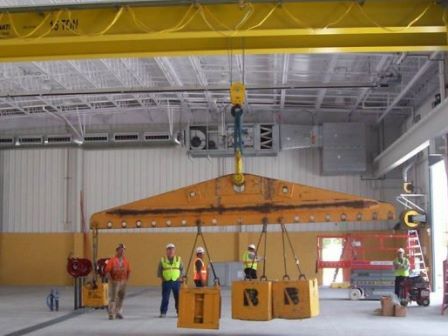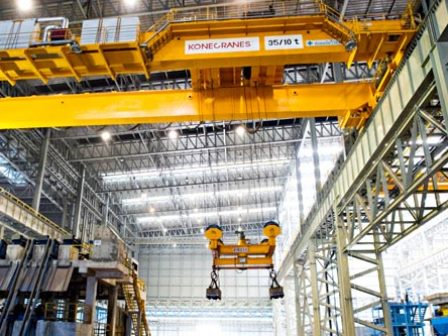Overhead cranes are powerful equipment that allows heavy loads to be lifted. Overhead cranes are also potential hazards, as both the cranes themselves and the loads they carry can cause damage if safety tips are not followed.
Train employees who work around overhead cranes on all workplace safety precautions. To ensure a safe work environment, follow these guidelines when operating an overhead crane.
Overhead crane operating instructions
Here are some important safety features to incorporate into your crane: Warning lights and indicator lights can be incorporated into the design of an overhead crane to provide personnel on the ground with the ability to recognize that the crane bridge is over the head and where the hook will be.
During maneuvers, the following guidelines must be followed:
- In the event of a power failure, the operator must place all controllers in the “off” position.
- When an operator leaves a crane unattended, they must unload any attached loads, turn the controllers to the “off” position, and open the main breaker.
- Before closing the main breaker, the operator must ensure that all controllers are in the “off” position.
- It is not necessary to open the main switch on a pendant control crane if the crane is left unattended for short periods.
- An operator should only respond to signals from the employee directing the elevator. Except for an emergency stop signal, which must be obeyed when given by any employee.
Overhead crane safety devices
Basic safety tips for the operation of overhead cranes
- Before use, make sure that the crane is suitable for the planned lifting task. Confirm you have the proper travel, lift, and capacity.
- Visually and physically inspect the crane before using it. Check for damage, wear, and correct operation of all functions.
- Confirm the weight of the cargo. Check the capacity of all equipment, including hardware, rope, and slings. Do not exceed these capacities.
- Select the proper sling for each lift. Inspect slings and other rigging accessories before use for wear.
- When communicating with a crane operator, use clear and agreed signals.
- Warn everyone in the load-lifting area before starting the lift.
- Slide the sling completely over the lifting hook and make sure the safety latch is closed.
- Secure unused sling legs. Do not drag slings or leave loose materials on top of a lifting load.
- Move load and controls smoothly. Minimize load swing.
- Walk ahead of cargo during travel and warn people to keep clear.
- Deposit loads on blocks, never directly on a sling. Do not pull or push loads from under the hoist.
- Do not leave the load (or crane) unattended while the load is suspended.
Related Topics

Overhead Crane Safe Work Procedure
Overhead crane operators must always keep in mind that they are responsible for the safety of other people.

Overhead Crane Safety Program
The purpose of this guide is to raise awareness of the hazards in lifting operations and provide basic knowledge in the safe operation of overhead cranes.

Overhead Crane Risk Assessment
Safety for the Good Operation of the Overhead Crane.
